- 3 Minutes to read
- Print
- DarkLight
- PDF
Interim Currency
- 3 Minutes to read
- Print
- DarkLight
- PDF
Overview
Interim currencies are used in Consolidation and serve as transitional means of exchange, helping mitigate the adverse effects of economic instability and facilitating a smoother transition to a more stable monetary environment.
For companies that operate internationally, multi-currency systems play an important role in simplifying transactions, reducing costs, and helping finance managers keep track of cash flow.
Companies can easily keep track of exchange rates when doing business in foreign currency with such systems and have all transactions automatically converted into their local currency. A multi-currency system aims to present transactions in foreign currencies and make them traceable.
Interim currencies offer a solution to currency-related challenges while providing flexibility in reporting and conducting transactions beyond local and common currencies. By diversifying currency options, interim currencies enable risk management, market access, and financial inclusion, which is particularly beneficial for businesses operating internationally or in regions with multiple currency systems.
Use Case
Alex is a finance manager whose business is undergoing international expansion. The organization is expanding into a region where the local currency (USD) is volatile or experiencing hyperinflation. In such a scenario, Alex could utilize an interim currency (Euro) to conduct its operations, manage currency fluctuations risks, ensure financial transaction stability, and facilitate smoother transactions with local partners, suppliers, and customers.
Ultimately, interim currency systems serve as a versatile tool to address currency instability and facilitate economic activity across a broad range of currencies.
To set up Interim Currencies, perform the below steps:
Enable Interim Currency
- Navigate to Maintenance > Admin > Configuration Tasks and click the Define Currency Parameters task.
- Select the Enable Interim Currency checkbox.
.png)
- Select the number of interim currencies you want (The maximum number is 3).
Add Interim Currency
To add Interim Currency, perform the following steps:
- Navigate to Maintenance > Hierarchy Management > Hierarchy Selection.
- Select Type, Dimension, and Hierarchy.
- Click Show.

- Select a Company and click the + icon to add a new member.
- Select a Node Type, Node Sub Type, and click Add.
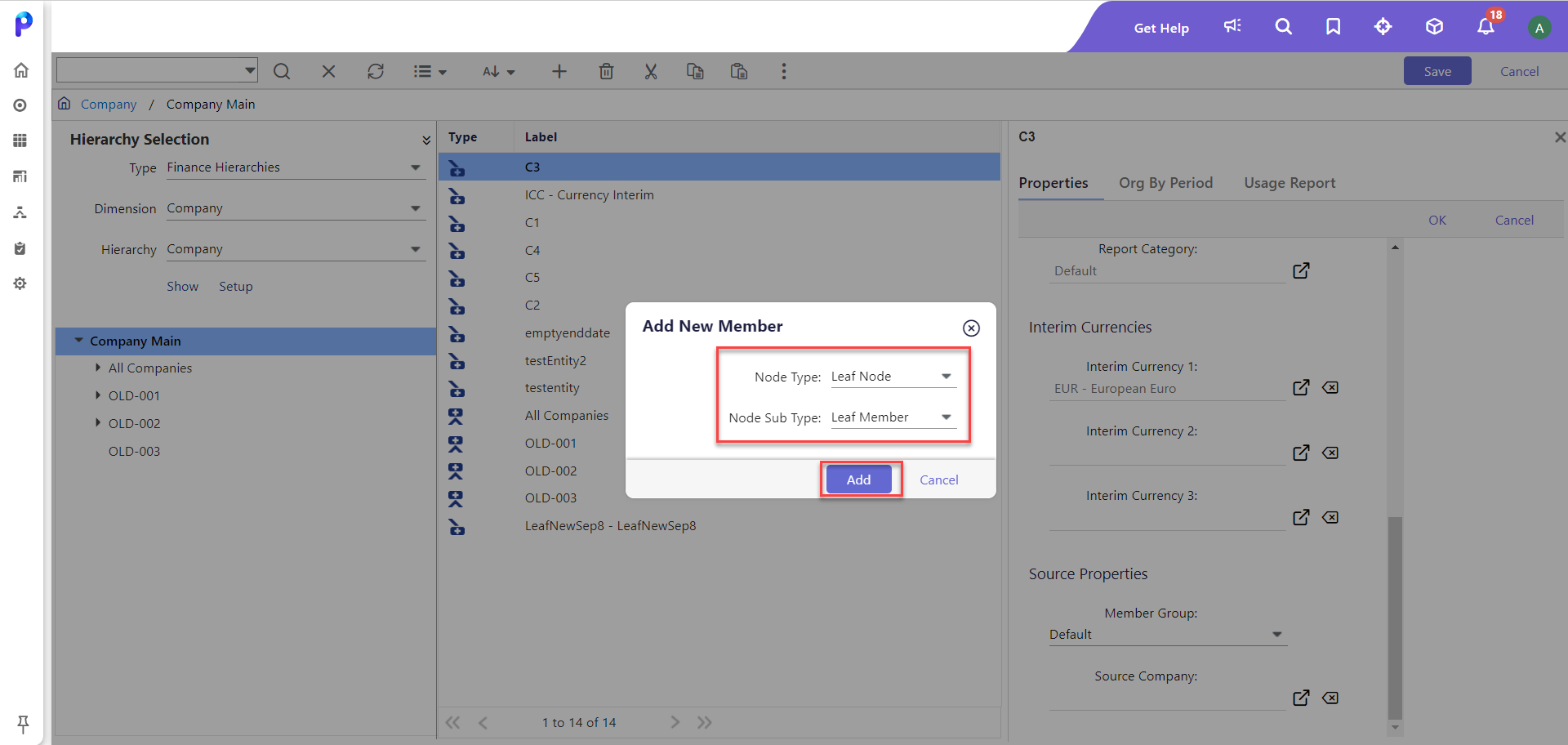
- Enter the Member Code, and select a value for Report Category. These two are mandatory fields for creating a member.
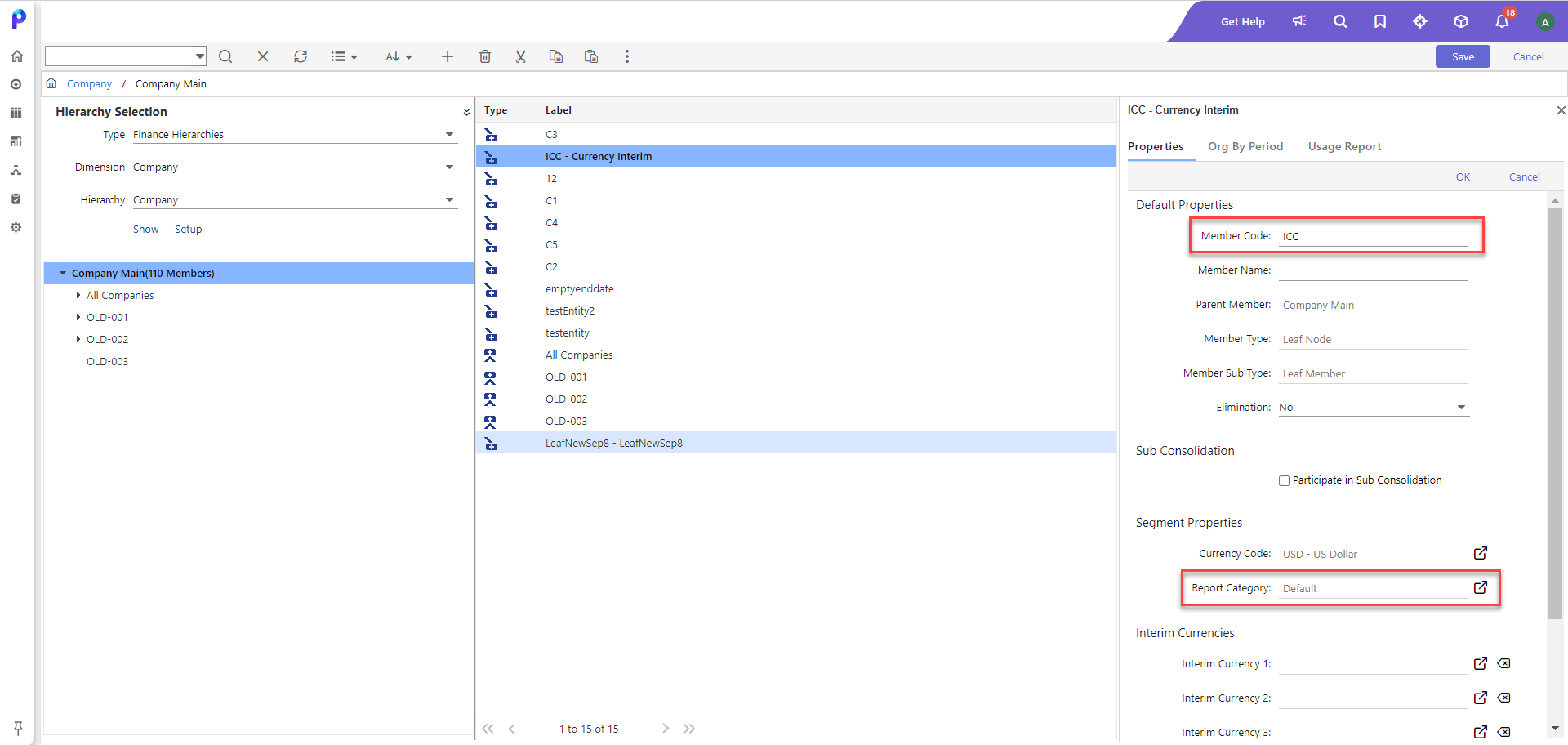
To learn more about Hierarchy Management, click here. - Click the Browse icon to select a value for Interim Currency.
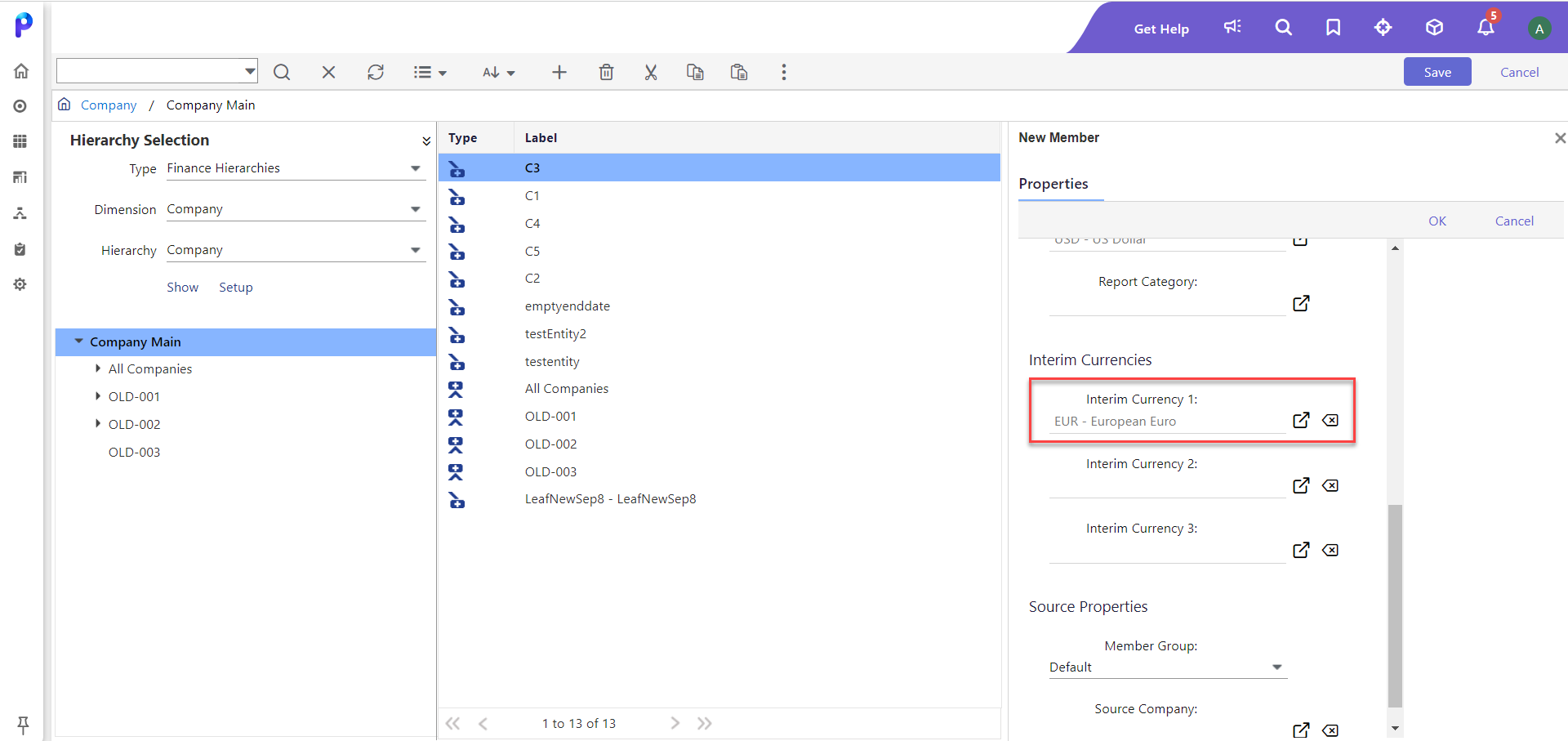
- Click Save.
Set Up Exchange Rate
To set up the exchange rate for the selected Interim Currency, perform the following steps:
- Navigate to Currency > Exchange Rate.
- Select Customized view, Scenario, and Currency for which you wish to apply for an exchange rate.Note:The Currency should be the same as the Interim Currency selected in Hierarchy Management for the company.
- Enter the exchange rate values in the selected Currency Type field.
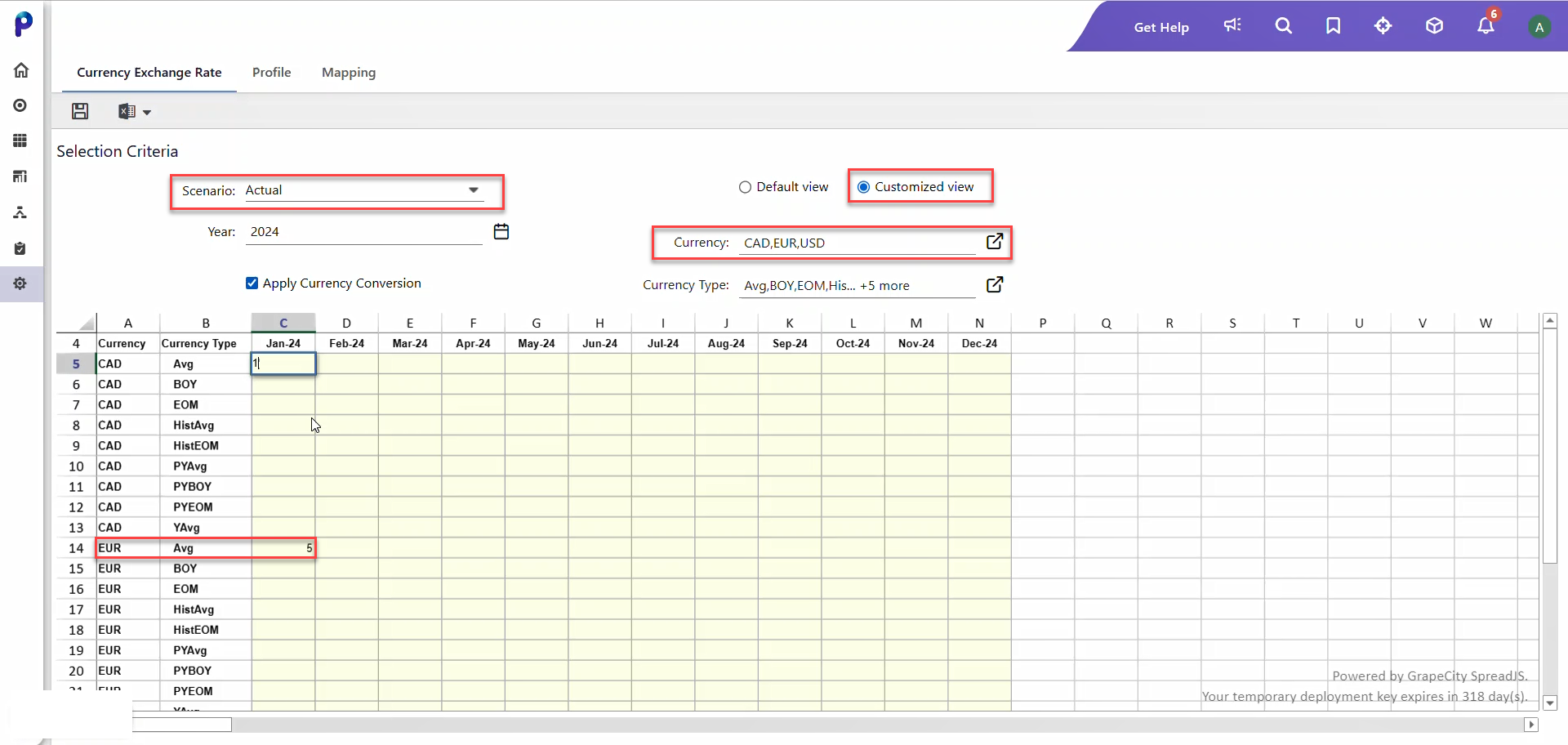
- Click Save.
.png)
Run the Consolidation Process
To run the consolidation process, perform the following steps:
- Navigate to the Consolidation Control Panel.
- Select a Period, Scenario, and Entity.
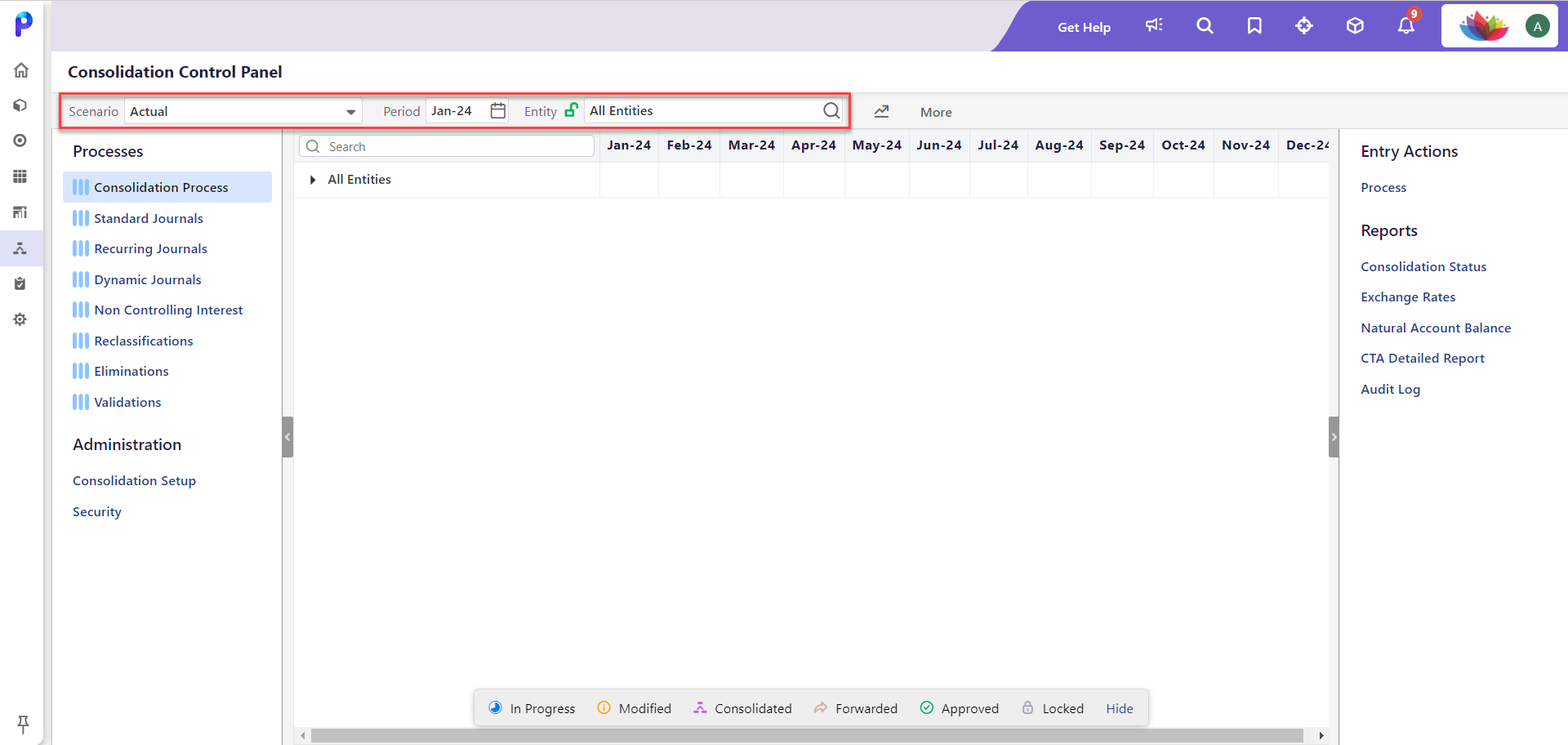
- Click OK.
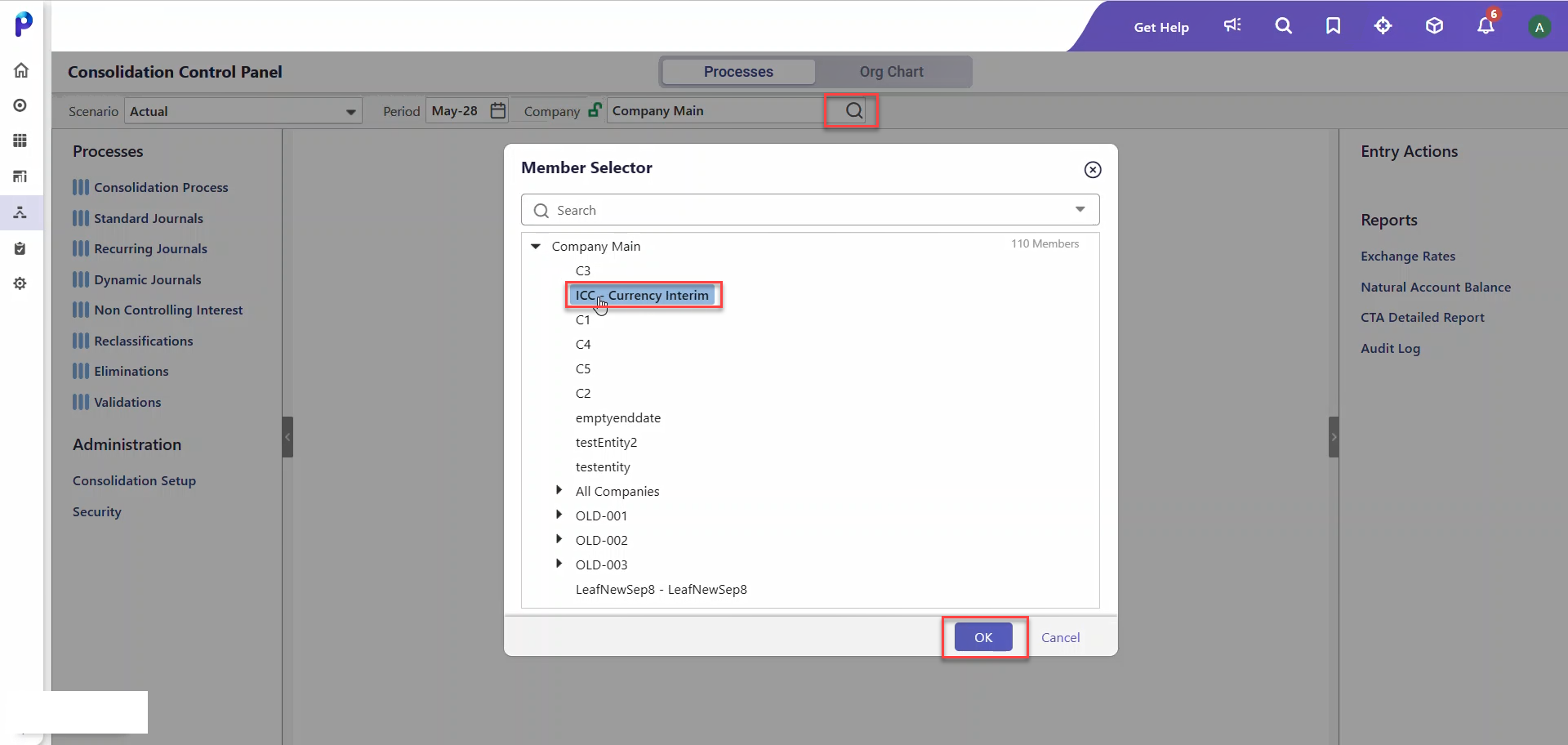 Note:
Note:You can create the Standard Journal at the Company's Main level without selecting a specific company. However, when adding Standard Journal lines, you must select the respective company.
- Add a Standard Journal and select Reporting as Adjustment(LC).
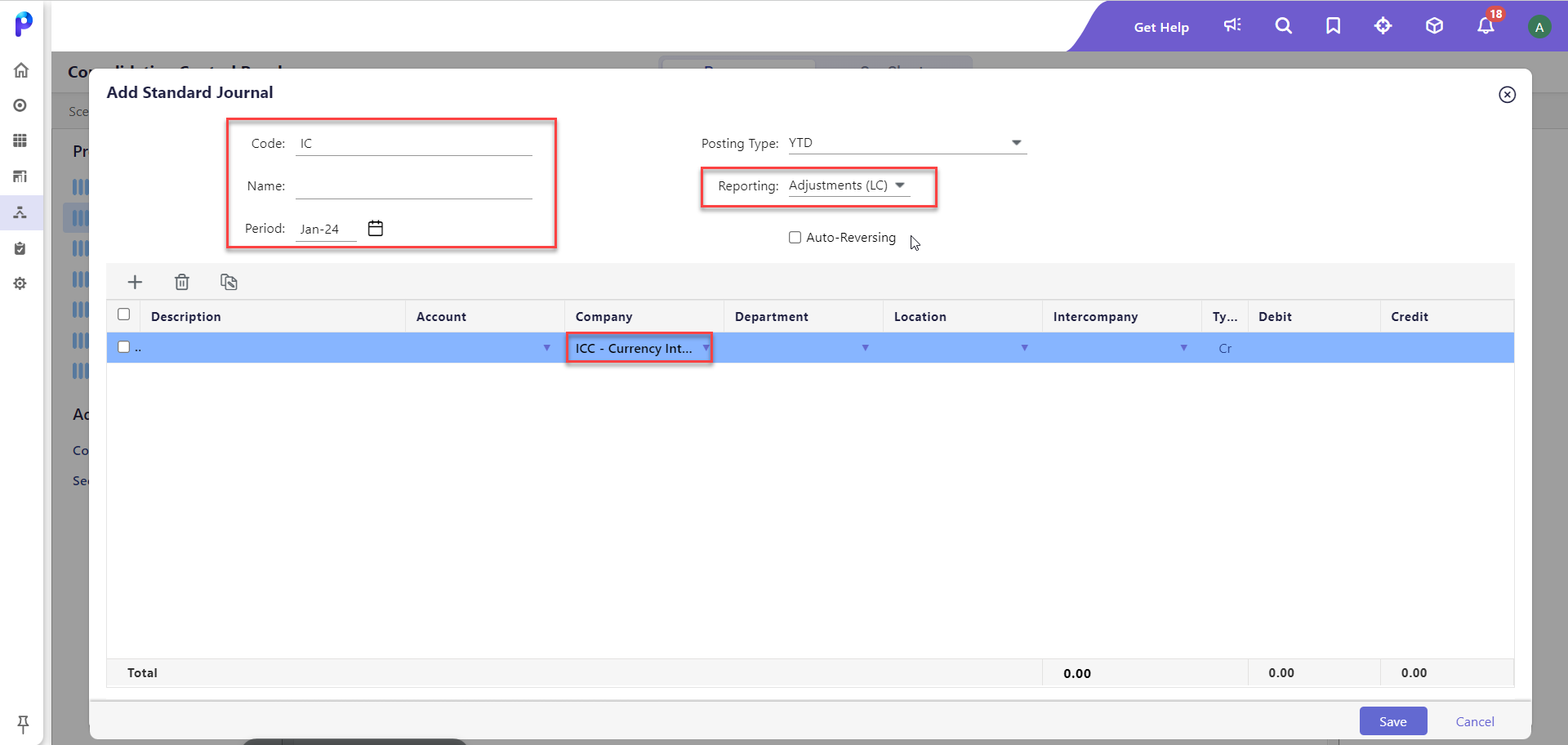
The Journal entry is saved. Now, post the journal.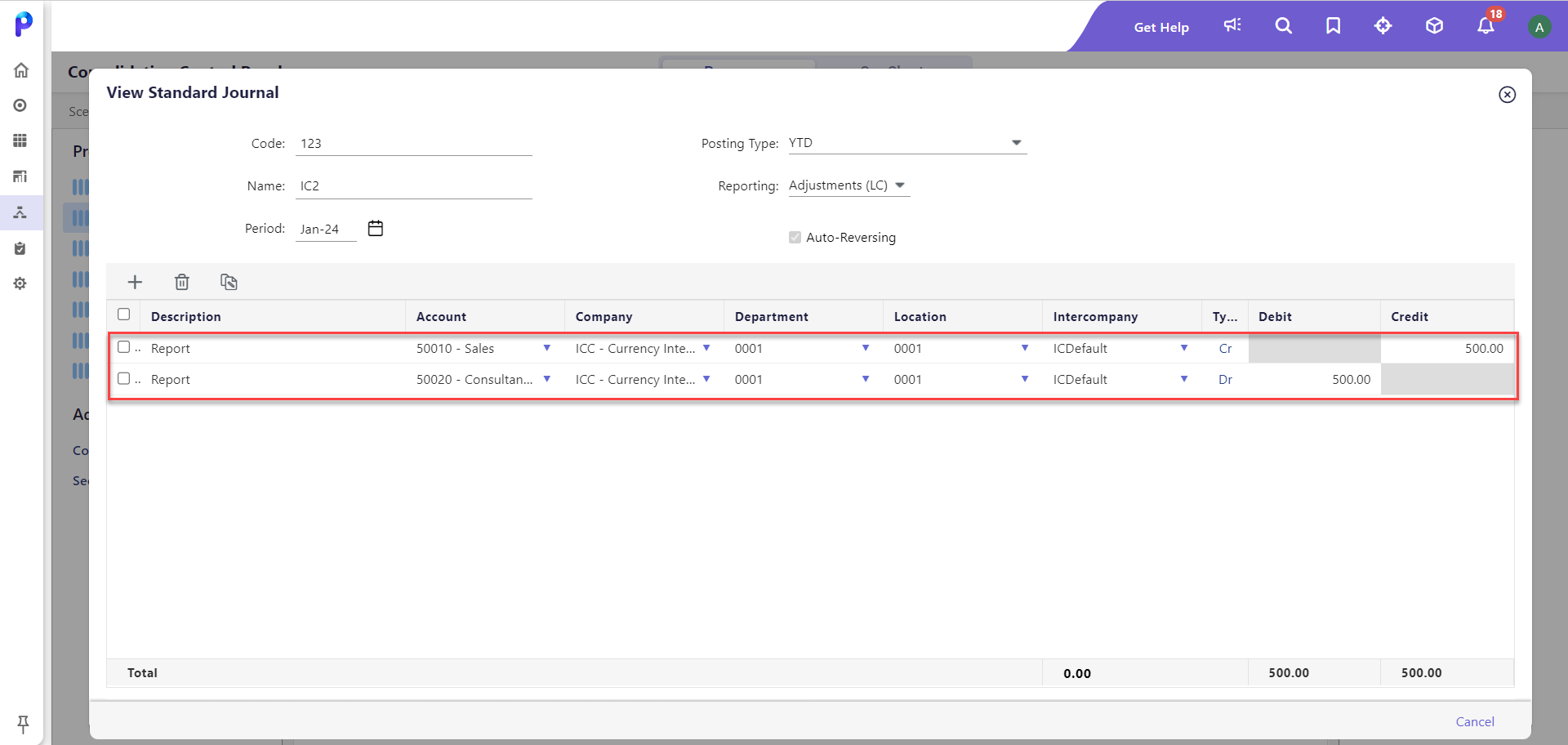
- Click Process in the Consolidation Process tab.
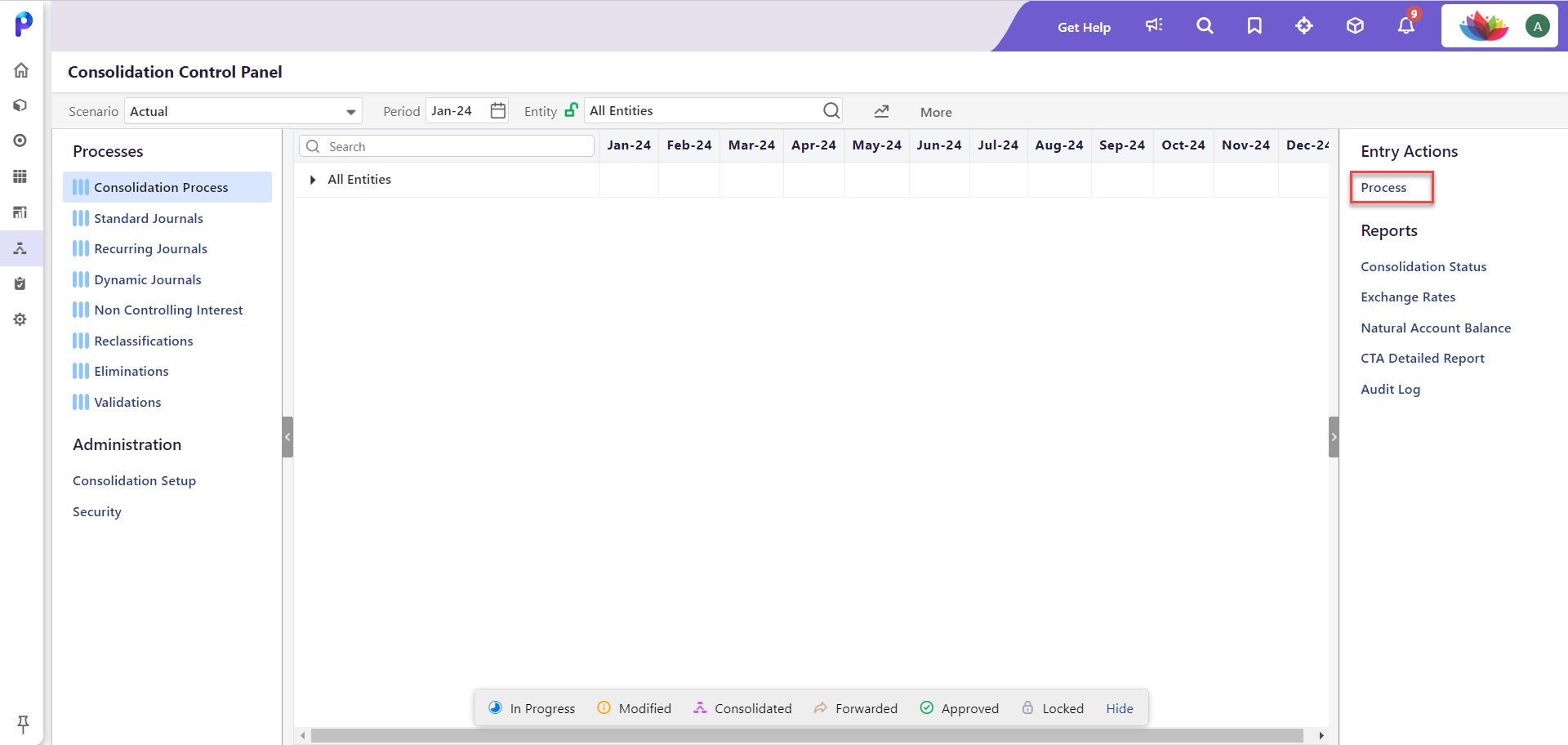
To learn more about the Consolidation Process, click here. - Select the Interim Currency(ies) checkbox and click Process. The journal will be processed.
.png) Note:Select multiple checkboxes if you want to select more than one Interim Currency.
Note:Select multiple checkboxes if you want to select more than one Interim Currency.
Validate the Data
To validate the data in reports, perform the following steps:
- Navigate to Maintenance > Report Administration > Verify Data.
- Select Scenario, Time, and Company from the Browse icon.
- Click Run.
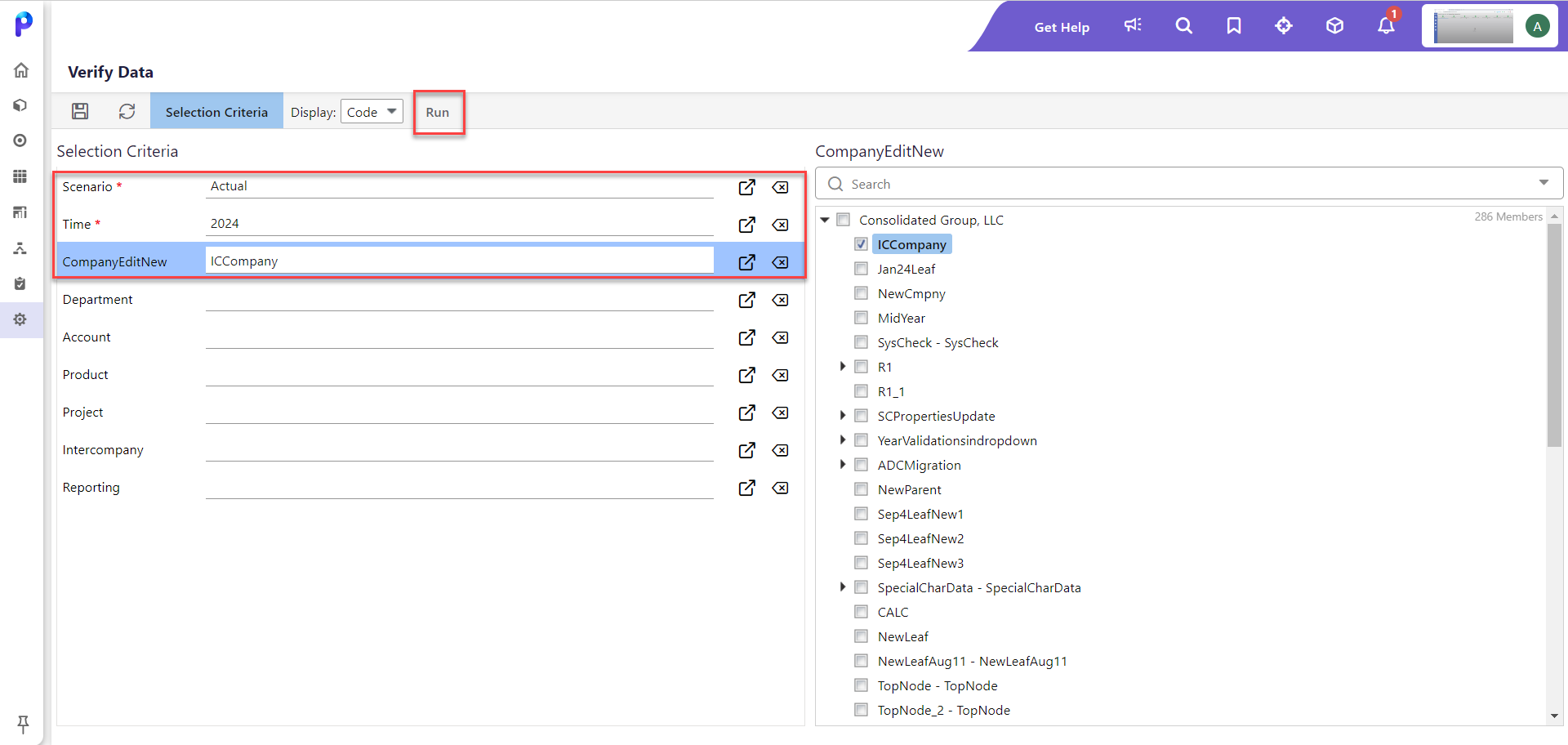
- The calculations of currency conversion are shown below. Similarly, the journal entry will be updated with a new entry.
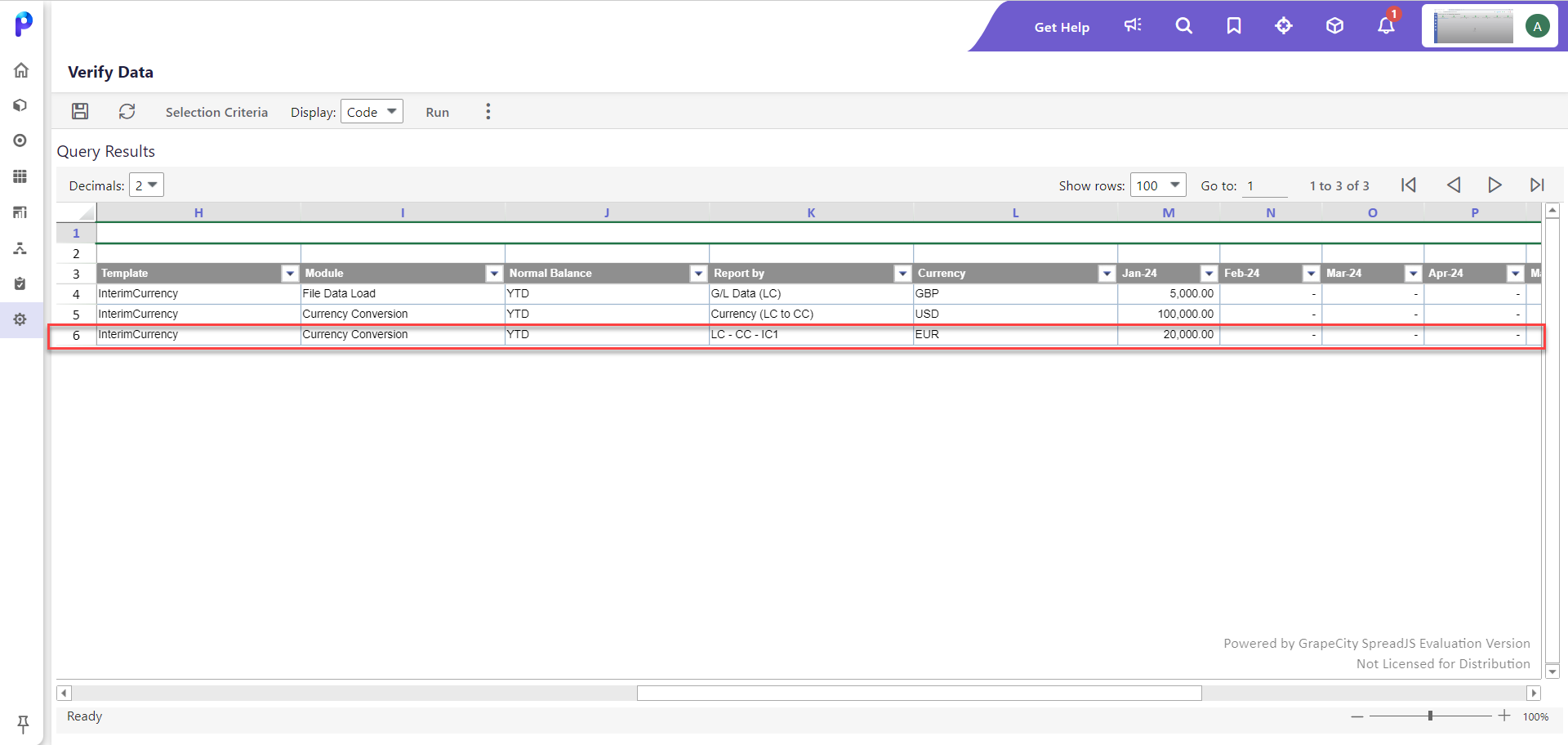
Interim Currency Calculation Example
The example below provides Interim Currency calculation:
USD = Common Currency GBP = Local Currency EUR = Interim Currency
1 GBP = 1.4119 USD = A
1 EUR =1.2661 USD = B
1 GBP =1.11515678 Euro = A/B
960.18 GBP X 1.115157 = 1,070.75 correct amount in verify data as Interim Currency

